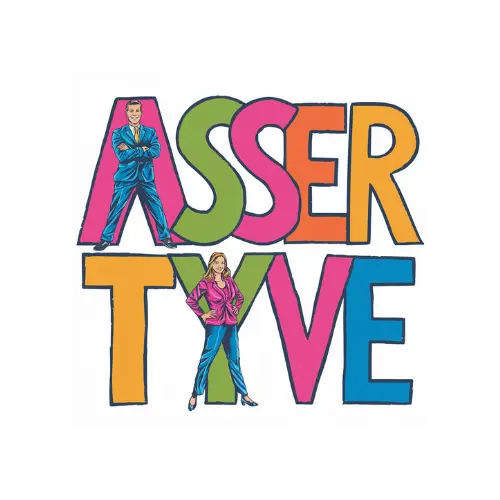Negotiation is an essential skill in both personal and professional settings. Whether you’re trying to close a business deal, buy a new car, or simply get a better salary, knowing how to negotiate effectively can make all the difference. In this article, we’ll explore four negotiation tactics that can help you get what you want.
Understanding the Power of Negotiation
Before we dive into the tactics, it’s essential to understand the power of negotiation. Negotiation is not about winning or losing; it’s about finding a mutually beneficial agreement. When you negotiate, you’re not trying to crush the other person; you’re trying to find a solution that works for both parties. This mindset shift can help you approach negotiations with confidence and empathy.
In a study by the Harvard Law School, researchers found that negotiators who focused on finding a mutually beneficial agreement were more likely to reach a successful outcome than those who focused on winning. This approach also leads to better relationships and increased trust.
The Importance of Preparation
Preparation is key to successful negotiation. Before you start negotiating, make sure you’ve done your research. Know the market value of what you’re negotiating for, and have a clear idea of what you want to achieve. This will give you a strong foundation to build on and help you stay focused during the negotiation.
For example, if you’re negotiating a salary, research the average salary for your position in your area. This will give you a solid basis for your negotiation. You can also prepare by thinking about your strengths and weaknesses, and how they relate to the negotiation.
Tactic #1: Separate the People from the Problem
This tactic is all about separating the emotional aspect of the negotiation from the actual problem you’re trying to solve. When you focus on the problem, rather than the person, you can approach the negotiation with a clear head and avoid getting bogged down in personal attacks or emotions.
For instance, if you’re negotiating with a difficult customer, try to separate their behavior from the issue at hand. Instead of getting defensive, focus on finding a solution that works for both parties. This will help you stay calm and professional, even in the face of adversity.
Real-Life Example
I once worked with a client who was negotiating a contract with a difficult vendor. The vendor was being extremely aggressive and confrontational, which was making it hard for my client to negotiate effectively. I advised my client to separate the vendor’s behavior from the issue at hand and focus on finding a mutually beneficial agreement. By doing so, my client was able to stay calm and professional, and eventually reached a successful outcome.
Tactic #2: Focus on Interests, Not Positions
This tactic is all about understanding the underlying interests and needs of the other party. When you focus on interests, rather than positions, you can find creative solutions that meet both parties’ needs.
For example, if you’re negotiating with a supplier, they may be unwilling to budge on price. However, if you ask them about their interests, you may find that they’re struggling to meet demand and need a longer lead time. By offering to place a larger order or provide a longer lead time, you can find a solution that works for both parties.
Real-Life Example
I once negotiated a deal with a supplier who was unwilling to budge on price. However, when I asked them about their interests, I discovered that they were struggling to meet demand and needed a longer lead time. I offered to place a larger order and provide a longer lead time, which they accepted. This solution worked for both parties, and we were able to reach a successful outcome.
Tactic #3: Use Objective Criteria
This tactic is all about using objective criteria to support your negotiation. When you use data, research, or expert opinions to support your position, you can build a strong case and increase your chances of success.
For example, if you’re negotiating a salary, you can use data from reputable sources like Glassdoor or Payscale to support your request. This will give you a solid basis for your negotiation and make it harder for the other party to refute.
Real-Life Example
I once negotiated a salary increase with an employee who was requesting a 20% raise. I used data from Glassdoor to show that their salary was below market average, and offered a 15% increase. The employee was happy with the offer, and we were able to reach a successful outcome.
Tactic #4: Make a Strong First Offer
This tactic is all about making a strong first offer that sets the tone for the negotiation. When you make a strong first offer, you can anchor the negotiation and increase your chances of success.
For example, if you’re negotiating a business deal, you can make a strong first offer that includes a clear proposal and a specific price. This will give the other party a clear understanding of what you’re offering and make it harder for them to negotiate a better deal.
Real-Life Example
I once negotiated a business deal with a potential partner who was unwilling to commit to a specific price. I made a strong first offer that included a clear proposal and a specific price, which they accepted. This solution worked for both parties, and we were able to reach a successful outcome.
FAQ
What is the most effective negotiation tactic?
The most effective negotiation tactic is to separate the people from the problem. This tactic helps you focus on the issue at hand, rather than getting bogged down in personal attacks or emotions.
How do I prepare for a negotiation?
Preparation is key to successful negotiation. Make sure you’ve done your research, know the market value of what you’re negotiating for, and have a clear idea of what you want to achieve.
What is the power of negotiation?
The power of negotiation lies in finding a mutually beneficial agreement. When you negotiate, you’re not trying to win or lose; you’re trying to find a solution that works for both parties.
Conclusion
Negotiation is a powerful tool that can help you achieve your goals and build strong relationships. By using the four negotiation tactics outlined in this article, you can increase your chances of success and get what you want. Remember to separate the people from the problem, focus on interests, not positions, use objective criteria, and make a strong first offer. With practice and patience, you can become a master negotiator and achieve your goals.







Leave a Reply